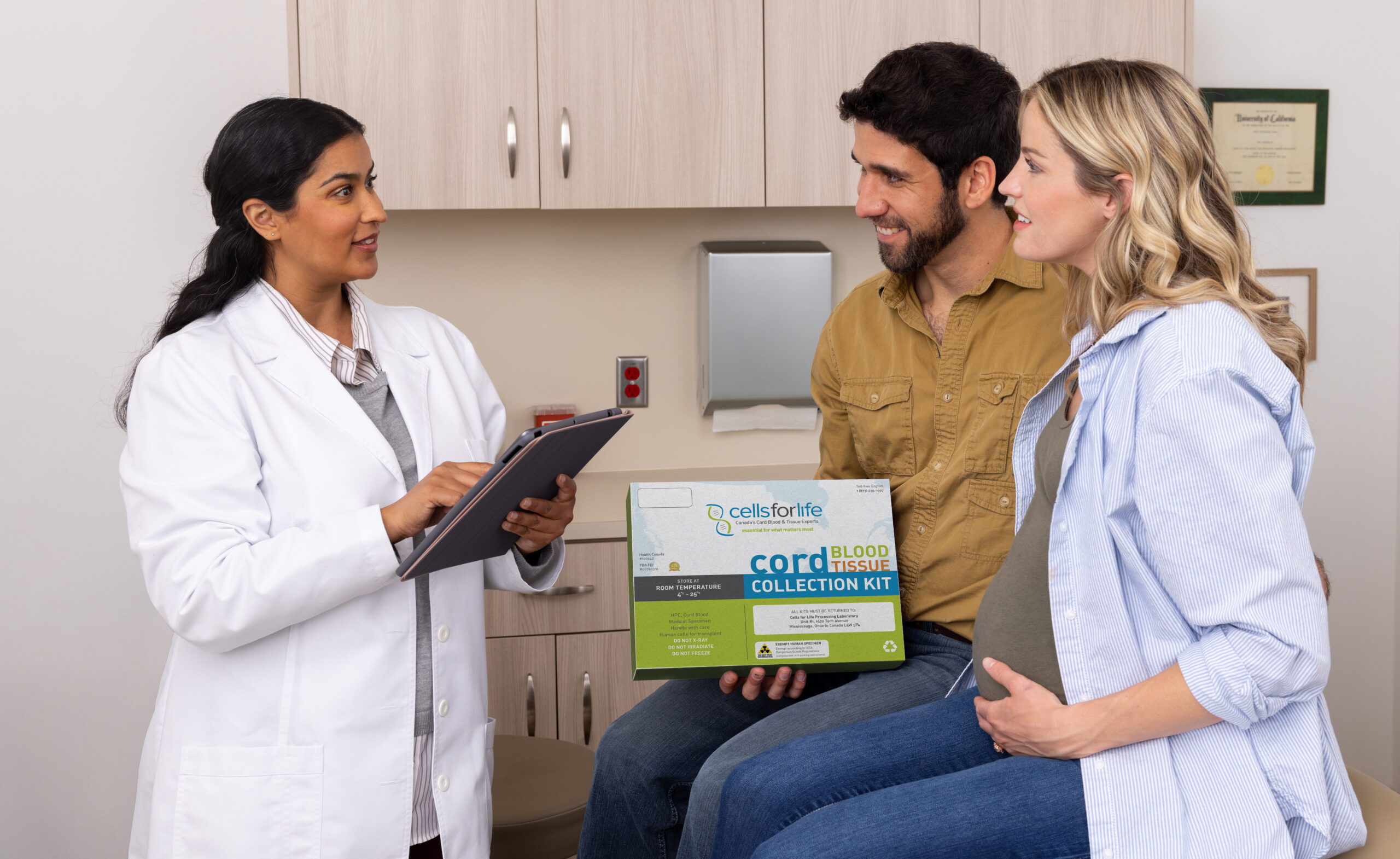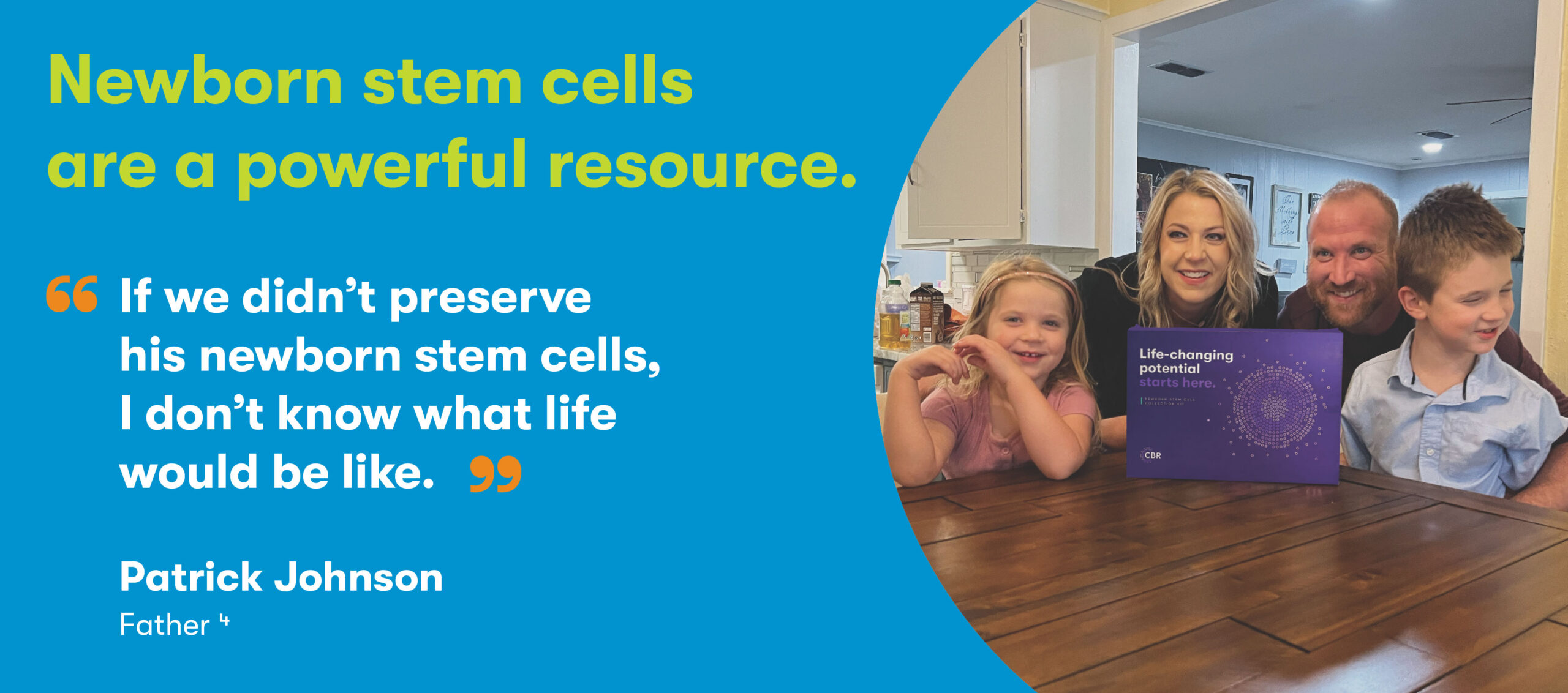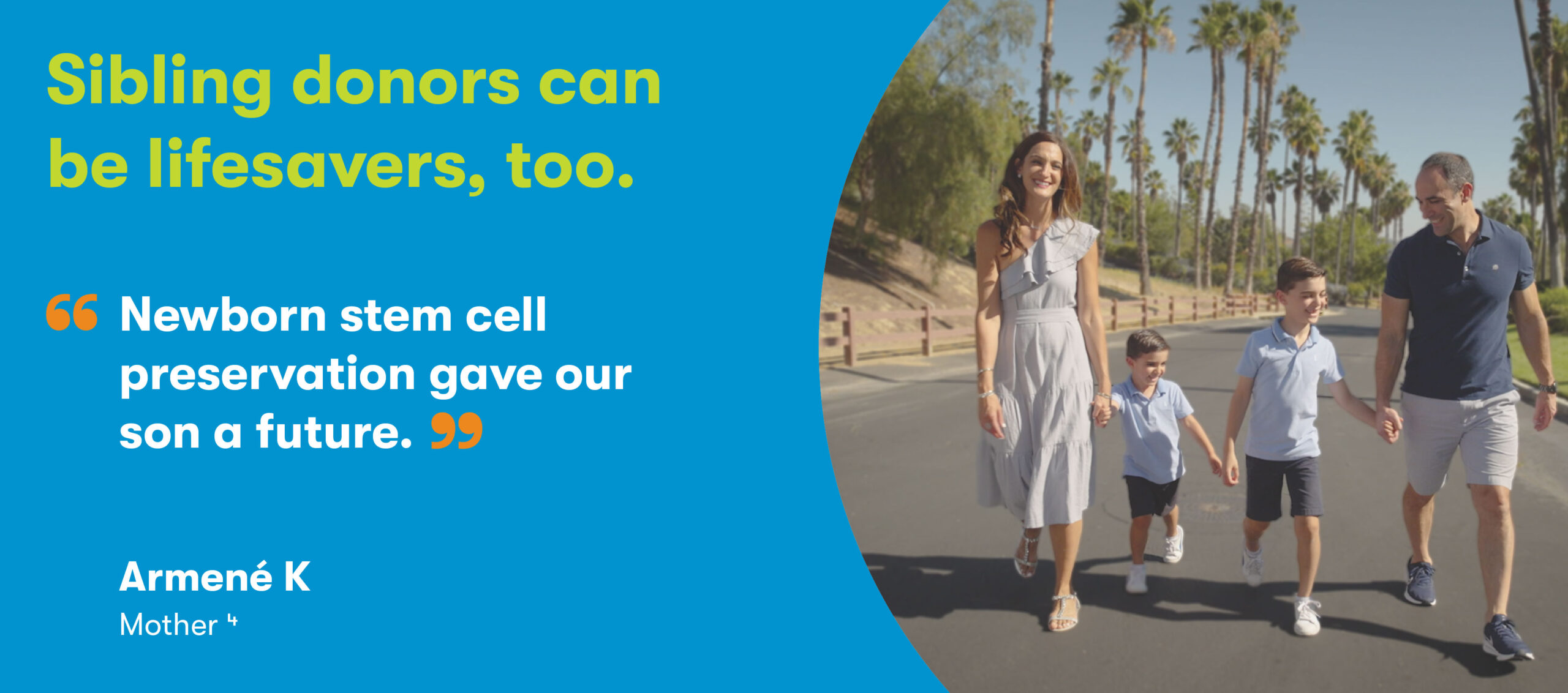
Join us this July as we celebrate Cord Blood Awareness Month, a time to shine a light on the remarkable healing potential of newborn stem cells. At Cells for Life, we are dedicating this entire month to educating parents about the importance of newborn stem cell preservation and the untold possibilities that these cells hold for your child’s future health.
We’re marking this special celebration by answering many of the most frequently asked questions that families have about newborn stem cells, including their role in regenerative medicine. As a bonus, we’ve collaborated with our sister company, Cord Blood Registry (CBR®), to bring you some stories about real families’ life-changing experiences with saving their baby’s cord blood and tissue.
Are newborn stem cells already being used?
Absolutely. Over three decades ago, cord blood emerged as a source of lifesaving stem cells for treating certain cancers, blood disorders, metabolic disorders, and immune diseases through transplant medicine.1 Today, there are over 80 conditions that can be treated with cord blood stem cells in stem cell transplants,2 with more than 45,000 procedures worldwide using cord blood from both donor and private family banks.3

While cord blood stem cell transplants remain a crucial treatment option, over 80% of the Cells for Life families who have utilized their preserved cord blood did so for experimental regenerative medicine applications for conditions like cerebral palsy, developmental delay, and hydrocephalus.5
What is regenerative medicine?
Regenerative medicine is an exciting scientific field focused on restoring or establishing normal function in the body by repairing or replacing damaged cells.
Newborn stem cells play a vital role in regenerative medicine. Over 500 clinical trials have been initiated to study their potential use.6,7 In regenerative medicine applications, newborn stem cells work by using their ability to migrate to sites of injury, reducing inflammation and aiding in the healing of damaged tissue.8
Given that many diseases affecting both children and adults are believed to be connected to inflammation, the potential applications of newborn stem cells in age-related organ or tissue damage, and chronic diseases are remarkable.9,10,11

Clinical studies suggest that the anti-inflammatory properties found in newborn stem cells may have even broader uses. Researchers believe that many age-related diseases are linked to immune system dysfunction, making newborn stem cell therapies potentially beneficial.13 Preserving your baby’s newborn stem cells now opens the door to future advancements in research that could benefit your family.
Who can use your baby’s preserved newborn stem cells?
Rest assured your baby’s newborn stem cells will be readily available to you if your family ever needs them. That’s because only immediate family members have access to the cord blood and cord tissue stem cell samples preserved at private banks like Cells for Life.
There’s peace of mind in knowing that your baby is a 100% match to themselves, and full siblings have a 75% chance of being at least a partial genetic match. Parents are always a partial match.

The decision of whether to use a child’s own stem cells or those from a related donor, such as a sibling, depends on the specific condition being treated. In general, a closer match between the donor and recipient leads to better treatment outcomes.14
Is newborn stem cell preservation an investment in your family’s future health?
As research progresses, stem cell transplantation protocols and outcomes improve, and the approval of additional uses for stem cells in regenerative medicine increases, your baby’s stem cells will not only retain their value but may become even more valuable over time.

By banking on the advancement of an entire field of research and science, you position your family to potentially benefit from groundbreaking applications. For example, the anti-tumor effects of NK (natural killer) cells and CAR-T cells hold promise for future cancer treatments15 and regulatory T cells from cord blood could revolutionize the treatment of autoimmune conditions such as type 1 diabetes.14
Can you combine cord clamping with cord blood preservation?
Good news! A study by the largest public donor bank in the U.S. shows that delaying cord clamping for 30-60 seconds does not significantly diminish the cell count of cord blood collected for preservation.16 While longer delays may reduce the available blood volume, many Cells for Life families have successfully pursued both delayed cord clamping and cord blood preservation. Consult with your healthcare provider to determine the best timing for your specific situation.
How long do preserved newborn stem cells stay good?
And here’s the really great news: cryopreservation can halt the passage of time for your newborn’s stem cells. Stem cells stored in proper cryogenic storage are believed to remain viable indefinitely, ensuring their potential use for years to come.17
Spread the word and let the healing begin.
This July, let’s celebrate Cord Blood Awareness Month together, raising awareness about the incredible healing potential of newborn stem cells. Join Cells for Life as we work to help protect your family’s future health through education and cutting-edge newborn stem cell preservation.
1. Zhu X, Tang B, Sun Z. Umbilical cord blood transplantation: Still growing and improving. Stem Cells Transl Med. 2021;10 Suppl 2(Suppl 2):S62-S74. doi:10.1002/ sctm.20-0495. 2. Mayani, H., Wagner, J.E. & Broxmeyer, H.E. Cord blood research, banking, and transplantation: achievements, challenges, and perspectives. Bone Marrow Transplant 55, 48–61 (2020). https://doi.org/10.1038/s41409-019-0546-9. 3. “Wagner JE. Cord blood 2.0: state of the art and future directions in transplant medicine. Blood Res. 2019 Mar;54(1):7-9. doi: 10.5045/br.2019.54.1.7. Epub 2019 Mar 21. PMID: 30956957; PMCID: PMC6439299. 4. This family’s experience is not necessarily representative of other’s experiences. Cells for Life cannot and does not guarantee specific results. 5. Internal data on file. 6. U.S National Library of Medicine. ClinicalTrials.gov. Accessed October 21, 2022. https://clinicaltrials.gov. 7. Verter F, Couto PS, Bersenev A. A dozen years of clinical trials performing advanced cell therapy with perinatal cells. Future Sci OA. 2018;4(10):FSO351. doi:10.4155/fsoa-2018-0085. 8. Meier C, Middlelanis J, Wasielewski B, et al. Spastic paresis after perinatal brain damage in rats is reduced by human cord blood mononuclear cells. Pediatr Res. 2006;59:244-249. 9. Couto PS, Bersenev A, Verter F. The first decade of advanced cell therapy clinical trials using perinatal cells (2005/2015). Regenerative Medicine. 2017;12(8):953-968. doi:10.2217/rme-2017-0066. 10. Williams DA, Moritz T. Umbilical cord blood stem cells as targets for genetic modification: new therapeutic approaches to somatic gene therapy. Blood cells. https://www.ncbi.nlm.nih.gov/pubmed/7749118. Published 1994. Accessed March 9, 2020. 11. Chen HK, Hung HF, Shyu KG, et al. Combined cord blood stem cells and gene therapy enhances*angiogenesis and improves cardiac performance in mouse after acute myocardial infarction. European journal of clinical investigation. https://www.ncbi.nlm.nih.gov/pubmed/16269017. Published November 2005. Accessed March 9, 2020. 12.Regenerative Medicine. AABB. Retrieved from: https://www.aabb.org/news-resources/resources/cellular-therapies/facts-about-cellular-therapies/regenerative-medicine. 13. 13. Fan, XL., Zhang, Y., Li, X. et al. Mechanisms underlying the protective effects of mesenchymal stem cell-based therapy. Cell. Mol. Life Sci. 77, 2771–2794 (2020). https://doi.org/10.1007/s00018-020-03454-6. 14. Kindwall-Keller TL, Ballen KK. Umbilical cord blood: The promise and the uncertainty. Stem Cells Transl Med. 2020;9(10):1153-1162. 15. Pan, K., Farrukh, H., Chittepu, V.C.S.R. et al. CAR race to cancer immunotherapy: from CAR T, CAR NK to CAR macrophage therapy. J Exp Clin Cancer Res 41, 119 (2022). https://doi.org/10.1186/s13046-022-02327-z. 16. Ciubotariu R, Scaradavou A, Ciubotariu I, Tarnawski M, Lloyd S, Albano M, Dobrila L, Rubinstein P, Grunebaum A. Impact of delayed umbilical cord clamping on public cord blood donations: can we help future patients and benefit infant donors? Transfusion. 2018 Jun;58(6):1427-1433. doi: 10.1111/trf.14574. Epub 2018 Mar 25. PMID: 29574750. 17. Broxmeyer HE, Lee MR, Hangoc G, et al. Hematopoietic stem/progenitor cells, generation of induced pluripotent stem cells, and isolation of endothelial progenitors from 21- to 23.5-year cryopreserved cord blood. Blood. 2011;117(18):4773-7.
